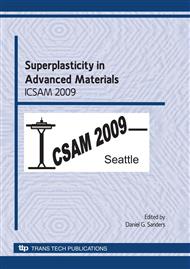p.119
p.125
p.135
p.141
p.153
p.169
p.179
p.185
p.197
Optimization of the Friction Stir Welding Process for Superplastic Forming and Improved Surface Texture for Titanium Aerospace Structures
Abstract:
In friction stir welding (FSW), the semi-circular shaped FSW pin tool feed marks that are left behind varied in depth and shape which are detrimental not only in fatigue performance but also in further processing such as superplastic forming (SPF). Experimental investigation was conducted to determine the effects of changes to the FSW process parameters on the surface roughness of the weld of fine grain 2 mm thick titanium alloy, Ti- 6Al-4V. In addition to optimizing the surface texture of the welds, the superplastic performance of the weld nugget was made to be equal to the superplasticity of the parent metal by altering the spindle speed and feed rate used during FSW to identify the quality in terms of cold weld or hot weld. FSW process conditions of spindle speed of 500 RPM and a feed rate of 150 mm/min was found to produce a uniform deformation in both weld and parent metal when the joint was superplastc formed.
Info:
Periodical:
Pages:
153-167
Citation:
Online since:
March 2010
Authors:
Price:
Сopyright:
© 2010 Trans Tech Publications Ltd. All Rights Reserved
Share:
Citation:


